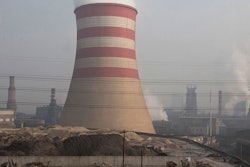Globalization and digital technologies are changing businesses, especially as companies look to find new ways to amplify growth and expand into new markets. To do this, companies must create efficiencies in their supply chains and be able to keep up with complex and ever-changing supply chain dynamics. So, the question is - How has labeling changed with digital transformation and the new global supply chain model and how can labeling solutions meet the needs of today’s enterprise businesses?
Businesses that leverage innovation and embrace change and run their supply chains in a collaborative-fashion are the ones that will succeed in this new landscape. As always, businesses must be able to achieve high levels of agility, consistency, control and transparency to prosper. This is why it’s critical to identify, understand and measure how labeling has a strategic impact on your supply chain and your company’s business growth. To get a pulse on the impact of labeling on today’s supply chain Loftware conducts an annual survey. Here’s what we found:
Trend 1: The Definition of Enterprise Labeling is Evolving
Labeling in today’s fast-paced global economy goes far beyond manufacturing, shipping and simple barcode labels. Today’s enterprise labeling offers a wide range of capabilities and benefits, providing dynamic data, content and artwork as well as the flexibility in labeling to meet all types of unique requirements in different industries and across global supply chains. As business demands continue to increase, companies are looking for enterprise labeling to become a central part of addressing new challenges that were addressed by adjacent yet separate solutions in the past. Companies are now seeing value in a holistic view of enterprise labeling as it converges with their requirements for complex workflow management, content management and artwork management.
Workflow and Approval Processes are Essential
As more stakeholders become involved in labeling and the importance of accuracy reaches new heights, workflow has become a vital component of enterprise labeling. Manual or disconnected workflow processes introduce additional cycle times and risk to the processes of reviewing and approving labels, content and artwork. Although our survey shows that as many as 82 percent of respondents are currently using workflows and approvals to monitor and control label changes, many of these processes are manual or not integrated directly within their enterprise labeling environment. Reducing cycle times on labels from months and weeks to days can represent a huge cost savings and increase agility when new products are introduced or major changes to labels are needed. Automating workflow within enterprise labeling is especially important for regulated industries such as Medical Device, Pharma, Food & Beverage, CPG and Chemical, where validation, traceability and compliance are essential.
Content Management is Critical
As the amount of content (data, translations, images, etc.) required for labeling and continues to increase, companies continue to struggle with the question of where that data should reside. Transactional and master data is most often sourced from ERP, WMS, SCM and PLM applications but many other elements that are used specifically for labels and packaging do not reside in these systems. However, these elements still need to be managed, reviewed and made available in real time for when labels are being printed. Our survey shows that 50 percent of respondents are integrating their labeling with some type of content management application. However, many companies are still struggling with content that resides in separate repositories or file systems that are not integrated into their enterprise labeling applications. This can make managing, reviewing and ensuring the accuracy of content difficult and even risky.
Enterprise Labeling and Artwork Management Converge
It is becoming clear there are many common requirements between labeling and artwork management and companies are looking for enterprise labeling to address the combined needs. This includes the ability to manage content including images, artwork, warnings, translations and phrases. It also means managing workflow and dynamically printing both labels and packaging artwork. The evolution of color print technologies and the move from pre-printed content via print houses versus on-demand printing is another important consideration. The demand for color labels has 48 percent of respondents expecting color to be even more prevalent in three years. At the same time, more businesses are looking
Trend 2: Centralized Control with Continuous Uptime is Imperative
In the past, global companies needed to choose between deploying labeling systems centrally to maintain consistency and streamline management versus deploying locally to maximize uptime and reduce risk. This struggle is highlighted by the fact that 55 percent of 1B+ companies have concerns over the availability of centralized labeling applications which drive labeling at individual locations. Companies are looking to manage labeling centrally and ensure alignment with corporate standards while enabling geographically dispersed locations to run autonomously without relying on an uninterrupted connection to the “mother ship.” Enterprise labeling now allows companies to realize the benefits of both centralized and decentralized deployments at the same time with new “multi-site” deployment capabilities. This approach offers the best of both worlds for companies that cannot allow a stop in mission-critical labeling but require greater control and consistency over global labeling.
Companies Require More Labeling Control and Consistency
Today’s companies are realizing that they can centralize and standardize with one enterprise labeling solution and still drive labeling from a range of local facilities. Fortunately, the advent of “multi-site” functionality enables centralization, empowering businesses to control labeling and make decisions centrally, while also meeting the demands of their localized facilities. Rather than manage multiple systems across different locations, this new breakthrough enables companies to streamline maintenance and ensure consistency while supporting enterprise-wide changes. This approach offers labeling consistency, helps support regulatory and standards compliance, enhances brand integrity, reduces costs and offers a single scalable solution that facilitates expansion to new global locations.
Business Continuity Demands Labeling Failover
Continuous labeling uptime is an absolute requirement. Almost all, 92 percent, of respondents said a stoppage in labeling causes operational disruption or production downtime. Additionally, 94 percent of 1B+ companies recognize the importance of maintaining continuous operations at the plant and/or manufacturing level. Despite its importance, achieving continuous uptime can be difficult for companies as nearly 83 percent reported that local operations depend on connectivity to centralized applications. The ability to have labeling continuity with failover from a central to a local instance is paramount in allowing remote locations to continue without disruption. The power of multi-site deployment capabilities enables labeling to fail-back to the central instance once the connection is re-established, then relevant transactional data can be synchronized between the central instance and any impacted facility.
Remote Facilities Look to Manage Labeling More Independently
In many cases, remote sites need to manage labeling with a degree of autonomy at manufacturing plants, contract manufacturer sites, warehouses, and distribution centers. These facilities often have location-specific nuances in labeling requirements that cannot be understood or managed by headquarters. As an example, production data is often location-centric, so manufacturing facilities need the ability to integrate with local data sources regardless of whether they are driving labeling centrally or, if a disruption occurs, locally. In this scenario, multi-site capabilities allow corporate to support regional deployments and ensure consistency while the remote sites get the location-specific autonomy they demand.
Check back soon for part 2 of this article. Josh Roffman is VP product management at Loftware.






















